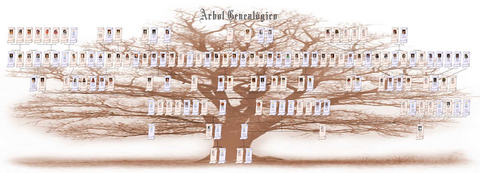Family Histories in the Colonial Classroom
3 December 2013 - 4:08pm
 Education about colonialism, especially in a settler society, often becomes quite personal. Not only am I, as an instructor, more aware of how I position and identify myself, but my students are also more vocal about their own subjectivities and backgrounds. This is not unique to my teaching methods; I’ve heard the same from other colleagues who teach pre- and post-confederation Canadian history. An activity that might be helpful, then, is to harness these feelings of personal interest and ask students to examine colonialism, and resistance to it, through analysis of their own family history.
Education about colonialism, especially in a settler society, often becomes quite personal. Not only am I, as an instructor, more aware of how I position and identify myself, but my students are also more vocal about their own subjectivities and backgrounds. This is not unique to my teaching methods; I’ve heard the same from other colleagues who teach pre- and post-confederation Canadian history. An activity that might be helpful, then, is to harness these feelings of personal interest and ask students to examine colonialism, and resistance to it, through analysis of their own family history.
Family history is socially valued in many cultures, on both sides of the colonial equation. For the Stó:lõ, a Coast Salish community in the south-western portion of what is now British Columbia, knowledge of one’s own family history is a measure of status; class distinctions are made between the smela:lh, “worthy people,” or “those who know their history,” and the s’texem, “worthless people,” who have “lost or forgotten their history.”[1] Family histories are sqwelqwel, “true news,” and their recollection is carefully maintained by a sxá:sls, a person “who keeps track of everything.”[2] Though these particulars are specific to Stó:lõ-Coast Salish culture, Indigenous communities worldwide see the importance of family history; for example, the whakapapa (genealogies) of the Maori, the Indigenous people of Aotearoa (New Zealand), are vital to their cultural formations.
Of course, European people and their descendants have also emphasized family history. Coats of arms and other forms of heraldry were used throughout Europe, while in particular places local traditions emerged, such as the Scottish tartan. Alongside these were forms of written genealogies, which were also used across Asia, most notably represented in the 2500-year-old family tree of Confucius.
A common assignment in many courses on the history of imperialism is to examine the movement of trade goods that went into the production of items that became identified with empire. An example here is a cup of tea, considered quintessentially British, while the tea is grown in China, and the sugar from sugar cane plantations in the Caribbean. Students trace the trajectory of the object, and then consider its final use at its destination, situating these tangible items within the imperial networks that transport them.
A new twist on the family tree assignment, which we generally associate with elementary school classes, could accomplish similar learning outcomes. Using their own family’s scrapbooks or conducting interviews with grandparents, as well as consulting any of the many online genealogy databases, students could trace the migrations of their families, and then contextualize these against the backdrop of colonial histories. Even in the case of Indigenous family histories, where little migration might happen on the global scale, regional movements could still be charted and interpreted historically. What historical events precipitated their ancestors to move, or to stay put? Were their ancestors involved in colonial conflicts? How have their families participated in or resisted the colonial project? Students could share their findings with their peers, and this could be directed into a respectful, productive discussion of the ways in which, even when we might not initially realize it, our history is all around us and effects us every day.
Since family history is cross-culturally significant, and both students and teachers can feel emotionally invested in the ways it is learned and taught, putting these familial experiences at the center of our lessons about colonialism is an intuitive approach that could maximize both student engagement and learning. Even more importantly, as they consider the ways in which their roots are embedded in colonial history, students might be encouraged to imagine decolonial futures.
[1] Keith Thor Carlson, “Reflections on Indigenous History and Memory: Reconstructing and Reconsidering Contact,” in Myth & Memory: Stories of Indigenous-European Contact, ed. John Sutton Lutz (Vancouver: UBC Press 2007), 49.
[2] Rosaleen George and Elizabeth Herrling, personal communication with Keith Thor Carlson, as cited in Carlson, “Reflections on Indigenous History and Memory: Reconstructing and Reconsidering Contact,” 51.
How do you integrate family histories in your history lessons?
Photo: "Ahnenblatt Family Tree", public domain, Wikipedia Commons

